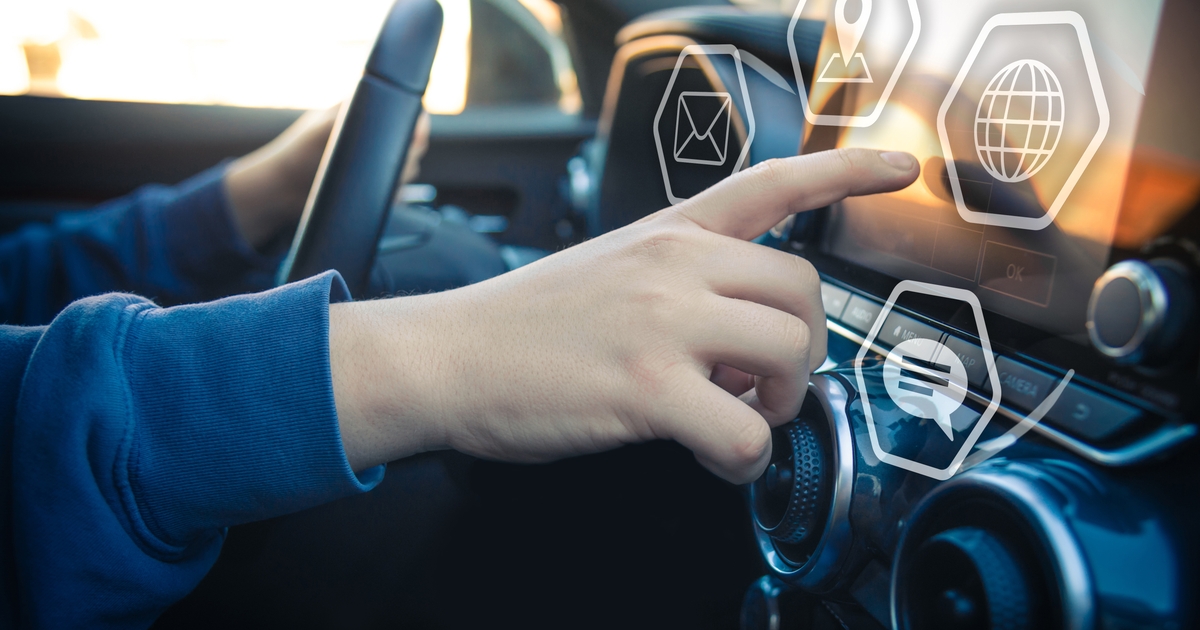
Car dealers are well-positioned to help automakers educate consumers about advanced technology when making new purchases.
So says Keith Chambers, an executive at market research and consulting firm Ipsos, speaking at a Society of Automotive Analysts presentation. (More about how dealers feel about that in a moment.)
Acquainting car owners with their vehicles’ technological capabilities gives them a better understanding and appreciation of today’s modern marvels on wheels. Some consumers need all the help they can get.
“Educating the consumer is essential,” Chambers says, familiarizing consumers with everything from advanced driver-assist systems to how to get the most from an infotainment system.
Automakers compete to put the latest and greatest equipment on their vehicles, so it’s important that buyers understand it.
Education also helps consumers value technology – and feel OK with paying for it.
“Start Small”
“Start small and work your way up,” Chambers says of the familiarization process. “But it is not all on automakers. Some of it is on dealers.”
Chambers and colleague Kacey Muccino, Ipsos vice president-automotive and mobility, recently gave a Society of Automotive Analysts presentation entitled “The Ever-Changing Role of Technology in the Vehicle.
The Ipsos executives also share consumer insights drawn from its New Vehicle Customer Satisfaction Survey and a Navigator report on how people feel about technology playing a more active role in the operation of a vehicle.
The question is whether automotive technology matters, says Muccino. “It does, or we wouldn’t be here today,” he adds.
Despite occasional misgivings, consumers evidently feel the same: 73% of Ipsos survey respondents cite technical innovations as a purchase reason. Under a quarter (21%) of respondents report there’s not enough technology in cars, while 12% indicate there’s too much.
Automakers need to understand how auto consumers use technology, what features are worth the effort and when it becomes too much, say both Muccino and Chambers.
It can get complicated.
Chambers advocates knowledgeable dealership staffers explaining technology features to their customers. But, depending on the timing, that can be like forcing students to take courses they don’t want to take.
“When I’m taking delivery of my purchased car, I don’t want to sit there for an hour listening to someone talk about its technology,” Chambers says. “I want to drive my new vehicle.”
Second Deliveries
He suggests dealerships offer a later “second delivery” process that specifically covers technical features such as adaptive cruise control, emergency automatic braking, lane departure warning, adaptive headlights and stop-start systems, which surveys indicate are the least popular tech features on cars. (The most favorite: back-up cameras.)
“That second-delivery session can center on their questions that arise from driving the vehicle a bit,” Chambers says.
Mark Schienberg, president of the Greater New York Automobile Dealers Assn., tells WardsAuto that a follow-up delivery is a great idea, and most dealers support it.
But getting customers to return to the dealership to attend such tutorials offers challenges. “In this area, people are busy, and it is hard to pin them down,” Schienberg says. “But dealers are willing to do second deliveries to go through things. Dealers love doing that. They do a good job of talking about vehicle features despite the challenge of customer patience.”
Getting all customers – not just technophiles – up to speed with advanced systems on their vehicles “is everyone’s responsibility,” says Matthew Phillips, CEO of Car Pros Automotive Group, a multi-store dealership group based near Seattle.
Every car buyer ��“deserves a proper delivery,” he tells WardsAuto, adding that a second delivery gives customers time to “play around” with their vehicles before learning more about them.
“Automotive technology is amazing, but it is easy for customers to feel overwhelmed by it,” Phillips says.
Then there’s the question: “Are they going to remember everything?” he says.
He notes that most automakers offer short tutorial videos explaining features.
Technology Consumers Want
Ipsos says that when surveyed consumers were asked what technology they’d like on their vehicles that wasn’t already included, analysts spotted somewhat of a shift from safety to convenience:
The answers—42%said ventilated seats, 39% chose soundproofing acoustical glass, 35% opted for head-up displays and 28% wanted rain-sensing wipers.
Successful, trust-building introductions of new or upgraded technology are seamless and followed up by consumer education, says Chambers.
Muccino adds: “And gather continuous customer feedback. Do that early and often. If done right, (technology) adoption will be much higher.”
